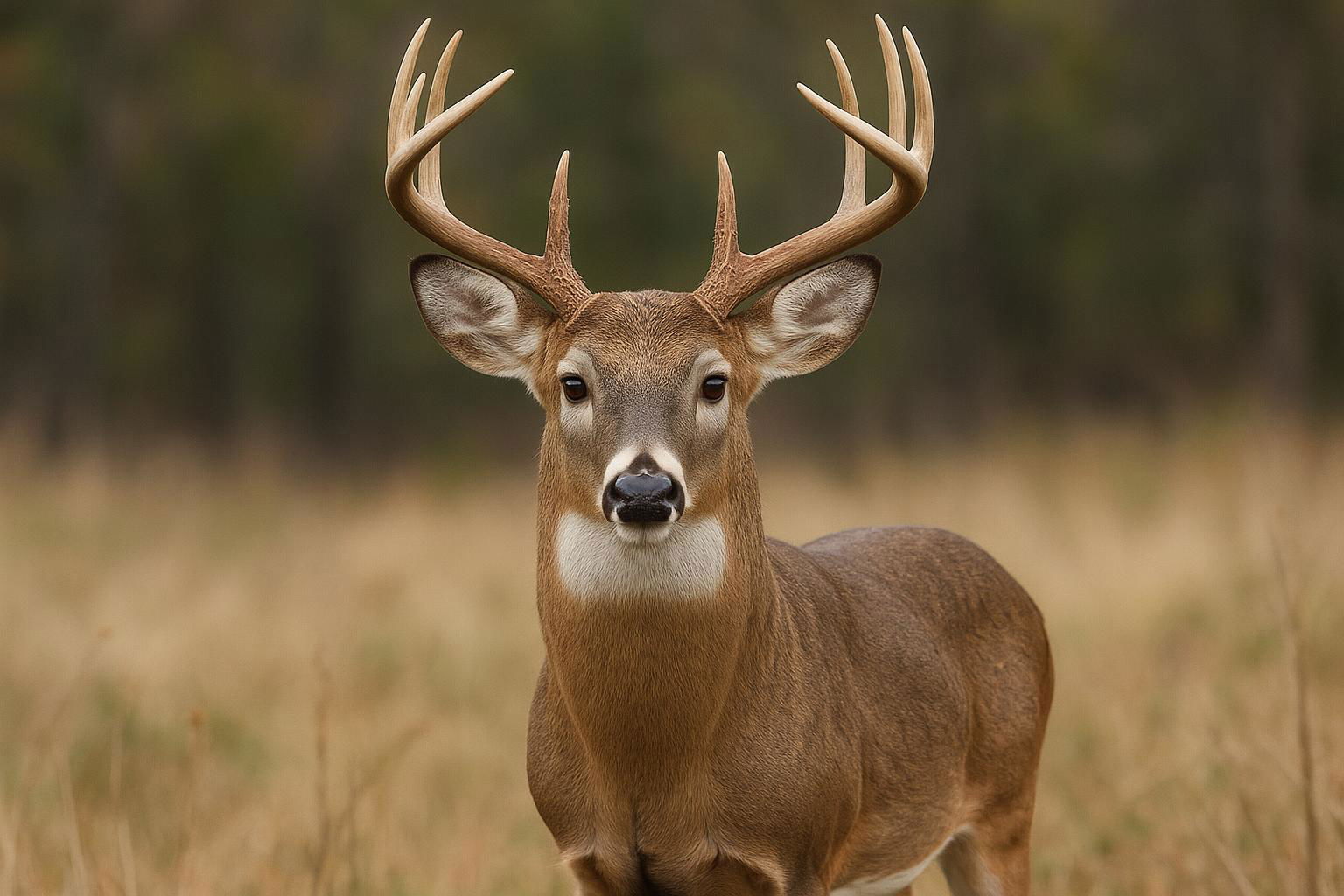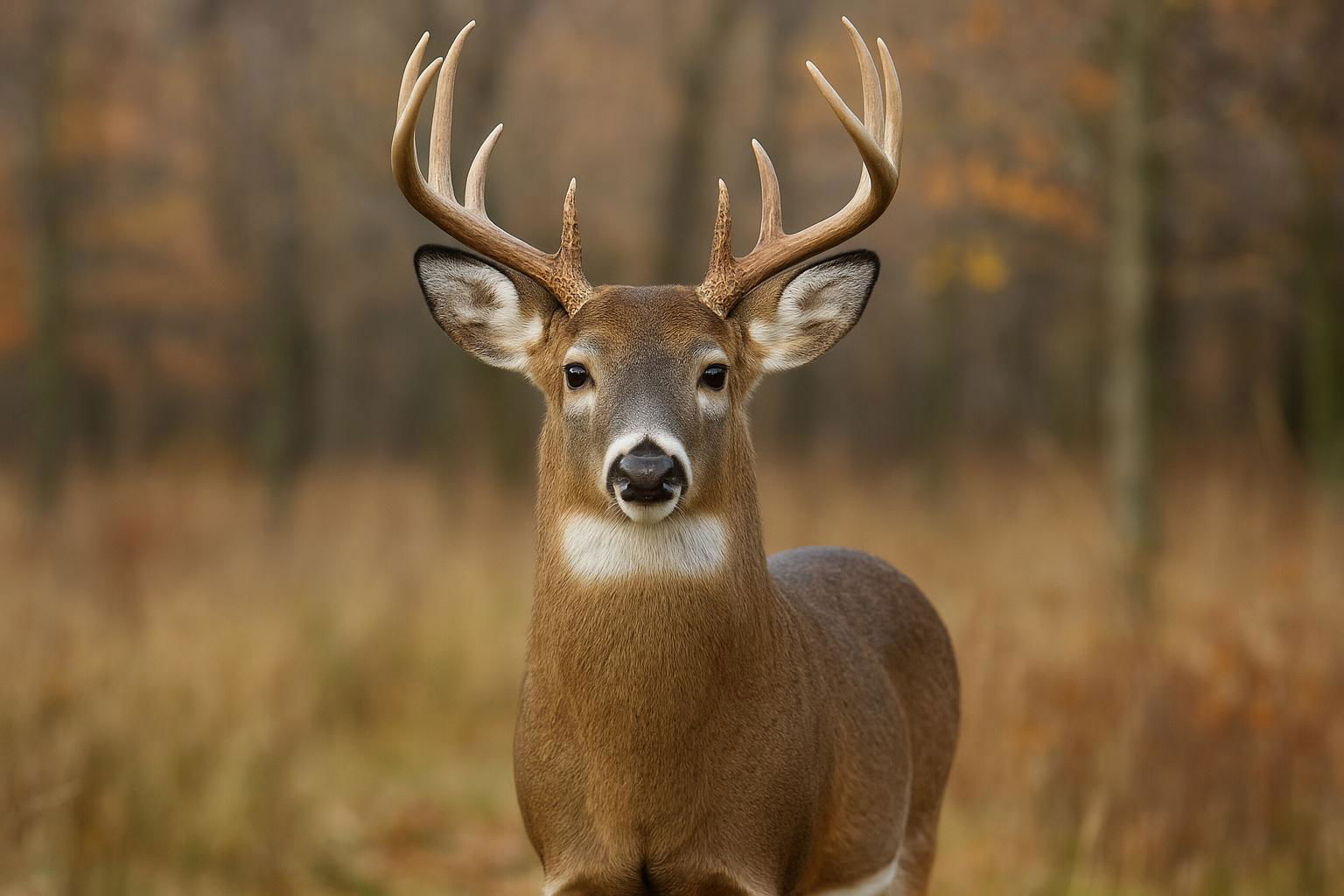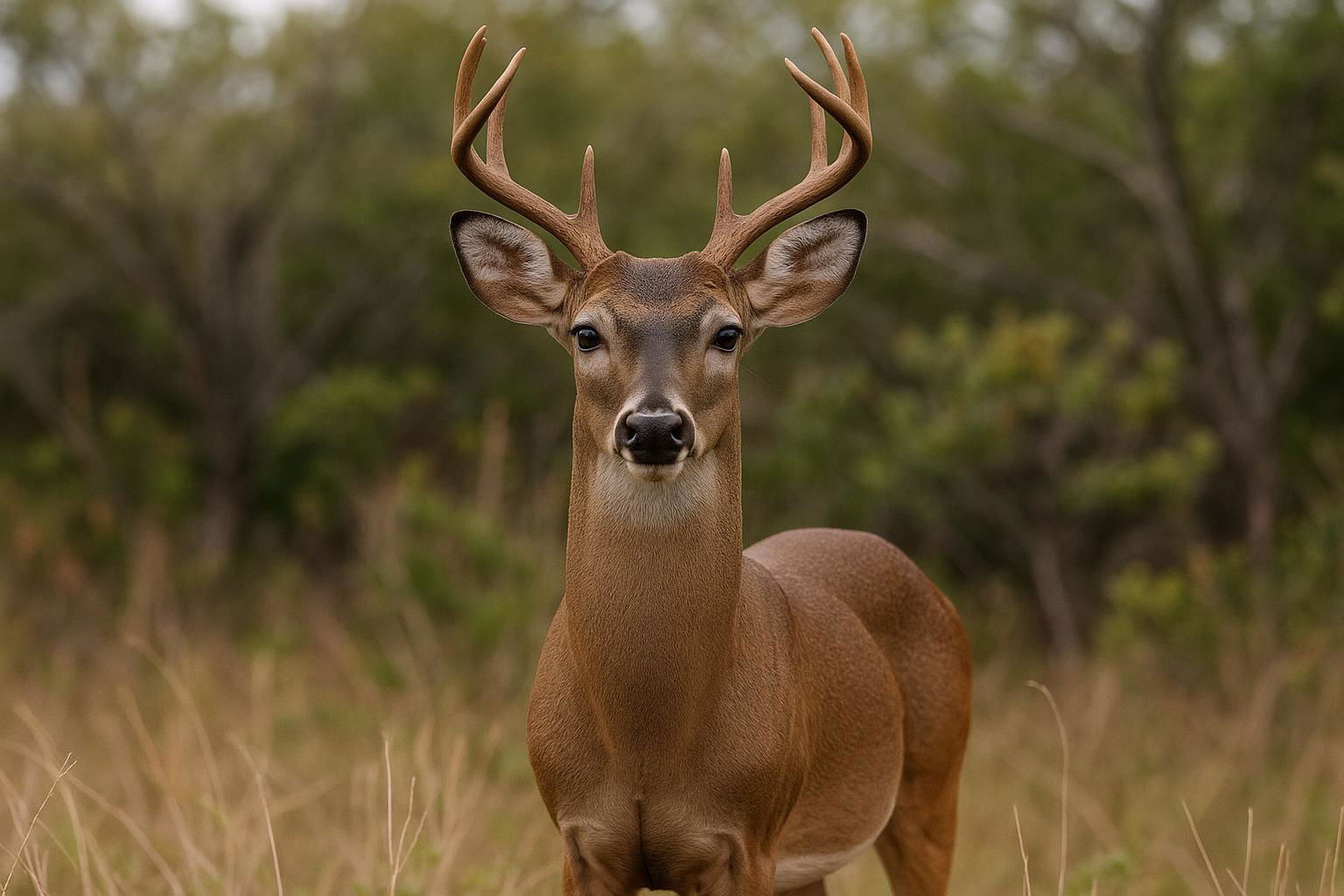
White-Tailed Deer
Odocoileus virginianus
The White-Tailed Deer, scientifically known as Odocoileus virginianus, is a widely distributed mammal native to North America and parts of Central America. Recognizable by its namesake white tail, which stands erect as a warning signal, this species exhibits a reddish-brown coat during summer that transitions to a grey-brown hue in winter for camouflage. Adult males, known as bucks, are distinguished by their impressive antler growth, which is annually shed and regrown, while females, or does, typically lack antlers. Known for their exceptional speed and agility, white-tailed deer can sprint up to 30 miles per hour and are adept swimmers. They inhabit diverse ecosystems, from dense forests and open grasslands to suburban areas, displaying remarkable adaptability to human encroachment. Dietarily, they are ruminants, primarily grazing on leaves, twigs, fruits, and nuts. Socially, they form matriarchal groups led by a dominant doe, though bucks generally lead solitary lives or form small bachelor groups outside of the mating season. White-tailed deer play a crucial ecological role, both as prey for predators and as consumers that influence vegetation patterns, making them a keystone species in their habitats.

 All Species & Breeds
All Species & Breeds
 Highland Cattle
Highland Cattle
 Miniature Donkeys
Miniature Donkeys
 All Species Directory
All Species Directory
 Highland Cattle in Virginia
Highland Cattle in Virginia
 Miniature Donkeys in Texas
Miniature Donkeys in Texas














